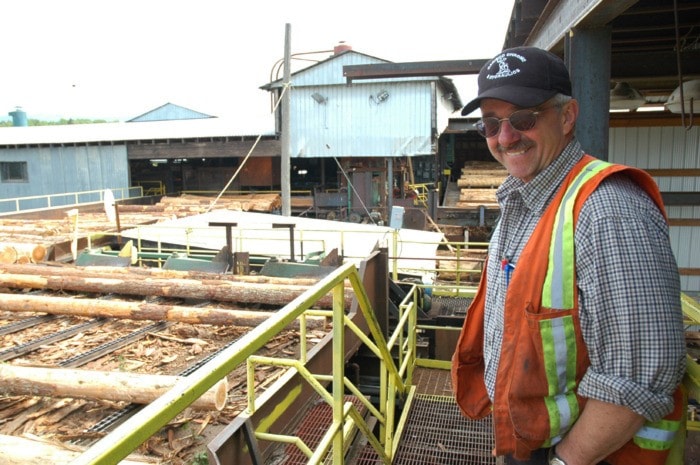Talks have started between the owners of a Kitwanga sawmill and B.C. after a July tax hike on logs raised red flags for industry leaders there.
July 1, B.C. rolled out a full-market pricing system for stumpage, which is a tax paid per metre of raw log. Although the increase was expected, mill owner Pacific BioEnergy’s vice president Brad Bennett said it was the magnitude of the increase specific to the region that came as a surprise, and a warning.
To Bennett, a forestry veteran, it showed something was wrong. The Kispiox region where the Kitwanga sawmill is was hit with an average $4 tax increase per meter of raw log. It was the highest increase in the province, according to forestry specialist John Drew who works with Pacific BioEnergy.
Bennett stressed this increase does not reflect activity at the mill. But finding the problem’s root and then applying a remedy is no easy task. Pacific BioEnergy is determined to fix the alleged problem, and has caught B.C.’s attention.
Although a spokesperson for the Ministry of Forests, Mines and Natural Resources said no problems were found with the way stumpage rates were calculated for the region, minister Steve Thomson visited Kitwanga Sawmill August 18, and committed a panel of technical specialists to hear and look into Pacific BioEnergy’s case, said Bennett.
“We have since hired some experts of our own to investigate the situation,” he said. “We’ll be involving them to engage with the government to make sure it doesn’t happen again.”
And although the two have yet to meet, preliminary findings from Pacific BioEnergy’s recent investigations affirm Bennett’s initial hunch — that while stumpage calculations may have been accurately made, the data going into the system is flawed.
Bennett stressed there is no way to simplify stumpage calculations, but there are pieces of the puzzle on which the investigation shone some light.
One of these is pulpwood. Pulpwood is lower quality wood, and quality of logs harvested is used when assessing tax. But during the time period from which information was drawn during tax assessment, there was no market for pulpwood, which means low-quality trees didn’t make it out of the bush. But, there is a fair bit of lower grade trees being harvested there now, explained Bennett. This means the data going into the system is skewed, because the tax reflects higher-quality wood which doesn’t match the Kispiox’s current timber profile, he said.
“When [B.C.] calculates stumpage, they take into consideration what people will pay for a specific type of timber in the open market,” Bennett said, explaining that using old data to reflect current conditions at the mill is like “comparing apples to oranges.”
“There is a problem there we think is fixable,” said Bennett. “We believe we’re right.”
But fixing the problem is tricky.
Anything to do with the pricing of logs is heavily scrutinized as it is under the microscope of the U.S. Simply put, the log market here is heavily controlled by the Softwood Lumber Agreement between U.S. and Canada, so subsidy, or anything that looks like it, will be called foul.
But a solution that maintains the integrity of that agreement is within PacificBio’s reach, said Bennett, noting options on how to potentially improve the situation:
1) By using data from other areas like Terrace that are similar in profile to the Kispiox region but have a more active history for comparison purposes.
2) By including recent data that more closely reflects current business practices there.
3) Using numbers from the region’s historical operations that happened before the sample period that’s currently being used for stumpage calculations.
But regardless of whether or not a remedy is reached, it’s business as usual for Pacific BioEnergy, said Bennett. The Prince-George based eco-energy company has chosen the location for a pellet mill the company plans to on constructing this year. The location is close to the sawmill and lease negotiations are underway. The company will use pulp to make the pellets.
